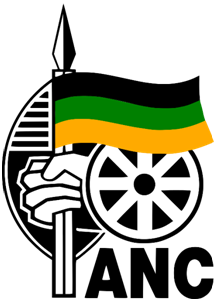The concepts of a nation state and a plural society are often seen to be at odds with one another. Jon Soske states, in his essay ‘The Impossible Concept: Settler Liberalism, Pan-Africanism, and the Language of Non-Racialism’, that “these terms named a phenomenon that was seen as provisional and inherently unstable: democracy in the absence of a singular people.”[1] The reason for this instability is the perceived lack of commonality between people of different ‘racial’ groupings. The ‘four nations’ thesis is one way in which one can conceptualise a post-apartheid South African nation and one which was adopted to varying degrees by disparate political groupings such as the old United Party, the subsequent Progressive Party and the African National Congress. The National Party, in contrast, viewed South Africa as a ‘multi-national’ state comprising of between 10 or 12 ‘nations [2] ; hence the formation of the ‘self-governing’ Homelands.
The ‘nations’ which are referred to in the ‘four nations’ thesis are the four major South African racial groups: Black, White, Coloured and Indian. There are two ways in which these groups have been conceptualised. The first focusses on the formation of a South African nation used these four groups to promote a multi-racial society with an overarching South African national identity.[3] In this way, these four groups can be viewed as having equal importance within the South African nation. A problem with this conceptualisation, however, is that it does not address the systematic oppression enacted by the apartheid government on the Coloured, Black and Indian groupings. In this way, the manner in which race, class and socio-economic status are interlinked is not examined.
The African National Congress Youth League (ANCYL) addressed this issue of oppression when it used the ‘four nation’ thesis as a framework in their manifesto of 1948, stating that “South Africa is a country of four chief nationalities, three of which (the European, Indians and Coloureds) are minorities, and three of which (the Africans, Coloureds and Indians) suffer national oppression.”[4]Neville Alexander, in his paper ‘Approaches to the National Question in South Africa’, goes on this state that, for the ANCYL, the African national group “constitute the nation of South Africa and the other three ‘nationalities’ constitute ‘national minorities’”.[5] He further points out a problem with this formulation, stating that if one group is to be given self-determination, it follows that the other three groups should receive that same right.[6] This issue was later addressed by grouping the Black, Indian and Coloured groups under one ‘African’ identity.[7] The ‘four nation’ thesis can be viewed to be intrinsically linked with the ANC’s political stance as the original four wagon wheel spokes on the ANC’s flag represented the four organisations which made up the multi-racial Congress Alliance.
 African National Congress Logo
African National Congress Logo
However, there is little mention of the ‘four nation’ thesis in the Freedom Charter, which prefers to utilise the term; ‘multi-racial society’. Jon Soske writes that “The Freedom Charter attempted to translate the political aesthetics of the Congress Alliance, which centred on the symbolic unity of the four racial groups, into the universalising language of civic nationalism. Yet this translation left central questions unanswered. What would be the constitutional status of racial groups within a new state? Would a single ethno-cultural identity develop out of South Africa’s diverse society?” [8] Soske further argues that these ambiguities were contextual and in fact was evidence of a compromise on the part of the ANC: “The Charter’s equivocations may have also reflected a calculated strategy. During the 1950s, the ANC downplayed the demand for African majority rule and used language that left open the possibility of a power sharing agreement. Since the ANC rejected the revolutionary overthrow of the state, it had to appeal to the White electorate and leave open the policy of working with parties opposed to universal franchise.”[9] This compromise has yet to be addressed, as Neville Alexander points out in 2011 “in light of the constitutional rhetoric about a “non-racial” or non-racist South Africa.”[10] Alexander goes on to state that “the answers we arrive at will radically transform our school and university curricula and the media, among many other things.”[11]
End Notes
[1] Jon Soske, ‘The Impossible Concept: Settler Liberalism, Pan-Africanism, and the Language of Non-racialism’ in African Historical Review, 42 (2), 2015, 9 , available at http://www.sahistory.org.za/sites/default/files/file%20uploads%20/the_impossible_concept_by_jon_soske.pdf ↵
[2] Neville Alexander, ‘Approaches to the National Question in South Africa’, Transformation 1, 1986, 75 ↵
[3] Ibid, 77 ↵
[4] Karis,T & Carter, G. – ‘From Protest to Challenge: A Documentary History of African Politics in South Africa 1882 – 1964’, Hope and Challenge, 2. Stanford, California: Hoover Institute Press, 1935-1952 as cited in Ibid. ↵
[5] Ibid, 78. ↵
[6] Ibid. ↵
[7] Ibid, 80. ↵
[8] Jon Soske, ‘The Impossible Concept: Settler Liberalism, Pan-Africanism, and the Language of Non-racialism’, 15. ↵
[9] Ibid, 16. ↵
[10] Neville Alexander, ‘100 Years of the African National Congress’, 2011 [online], available at http://www.sahistory.org.za/archive/100-years-african-national-congress-neville-alexander ↵
[11] Ibid. ↵